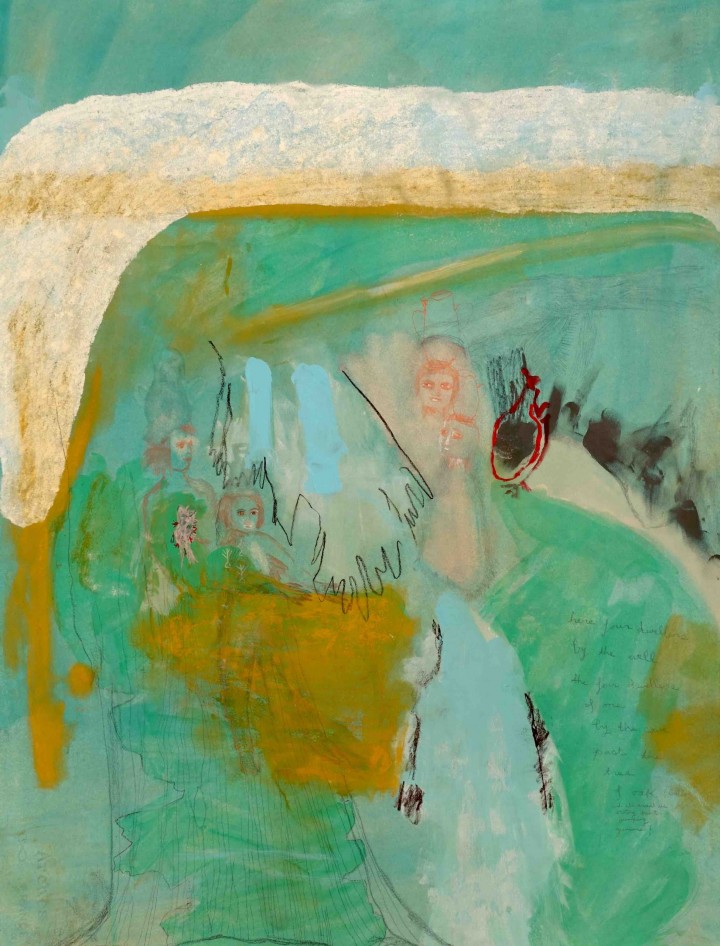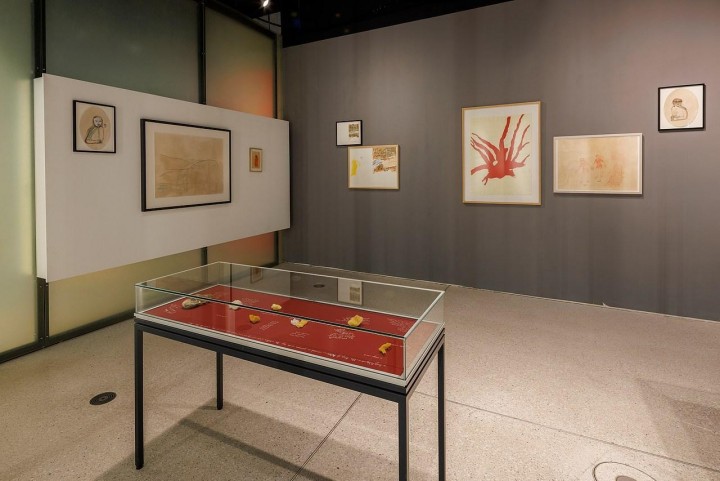Scottish Art News
Latest news
Magazine
News & Press
Publications
Jumana Emil Abboud: The Unbearable Halfness of Being
By Susan Mansfield, 13.12.2023

Although Jumana Emil Abboud’s exhibition at Cample Line opened before the escalation of the current conflict in the Middle East, and the work was first presented at Documenta 15 in 2022, it’s impossible not to read the work of a Palestinian artist, made in and about the West Bank, through the lens of current events.
For the last 15 years, Abboud’s work has focused on springs and water sources, liminal places steeped in folklore and associations with the supernatural (as they are in Scotland). This body of work was made during a long residency in ’Ein Qiniya, a village north of Ramallah, at the invitation of Sakiya, the art-ecology-agriculture project featured in the Cooking Sections exhibition last year at Inverleith House..
While her work is not overtly political, choosing to explore the landscape not as a theatre of conflict but through the realm of folklore, memory and imagination is still a political choice. In ’Ein Qiniya, she and her collaborators move through a landscape which is home to military outposts and illegal settlements, as well as being a receptacle for stories which have been passed down in Palestinian culture for centuries.
 The bird of this story II, 2022, 39 x 20 cm, oak gall ink, natural wax crayon made from earth near ‘Ein Qiniya spring, pastel and pencil on paper. Courtesy of the artist
The bird of this story II, 2022, 39 x 20 cm, oak gall ink, natural wax crayon made from earth near ‘Ein Qiniya spring, pastel and pencil on paper. Courtesy of the artist
Abboud’s work manifests as performance, film (with her collaborator Issa Freij), drawings and sculpture, though a foundational part of it is seeking out the water sources themselves. In recent years, her guide has been a 1922 essay by Dr Tawfiq Cannan, ‘Haunted Springs and Water Demons in Palestine’.
In ’Ein Qiniya, she gathered a group of local people whom she named ‘The Water Diviners’ to explore seven endangered springs on the hill near the village and create their own stories around them. The 30-minute film, ‘The Water Keepers’, describes a walk, a sharing of stories and a ritual in which they ‘watch’ the sunset blindfold.
One of the bodies of work in the show is a collection of objects found by the company at springs, cast in wax and reimagined by them as votive offerings and talismans: seed pods, pieces of animal bone, halves of pomegranate become charms for gratitude or against fear, or a “thumb print of a water spirit”.
While these are immediately accessible and appealing, Abboud’s drawings are more mysterious. They have a simple, almost childlike, quality and often look unfinished, but clearly relate to myths and stories, particularly a story called ‘Half-A-Halfling’ in which the underdog hero of the title ultimately wins respect for his cleverness and bravery.
 The Unbearable Halfness of Being, June-September 2022, exhibition view, Documenta Fifteen, Grimmwelt, Kassel. Courtesy- the artist; photograph- Frank Sperling
The Unbearable Halfness of Being, June-September 2022, exhibition view, Documenta Fifteen, Grimmwelt, Kassel. Courtesy- the artist; photograph- Frank Sperling
Imagery of halving and doubling recurs through the show. One of the biggest works is ‘Our other half’, a diptych in which the two parts almost (but not quite) mirror one another. At first, Abboud says, she found the idea of halfness “unbearable”, but she seems to have come to draw strength from it. To be “half” has a particular resonance when a people is displaced, restricted. But to be fractured is also to be multiple.
Abboud’s approach to art-making is both fractured and multiple. She draws in collaborators: an embroiderer in ’Ein Qiniya, a wood carver in Bethlehem, her team of Water Diviners. Her films have multiple perspectives, multiple voices. The show also includes a crocheted picture of a horse made by her mother, a kind of personal guardian.
It is in the nature of folk tales that they are passed down through multiple hands, belonging not to any one individual but to the community. Abboud’s art imbues this idea, offering responses, suggesting ways of looking, but working in fragments, not overviews or conclusions. The visual metaphor, from her film ‘I Feel Everything’, of a chain of people pouring water to and from one another’s cupped hands, feels key.
But the stories shift and take on the shapes and hues of current circumstances. Exploring local springs with their imaginations, her Water Diviners speak of comfort, safety, enchantment, “a place without boundaries or conflict” - as well they might.
Jumana Emil Abboud: The Unbearable Halfness of Being, is exhibited at Cample Line until 17 December. www.campleline.org.uk
You can watch films online here.




